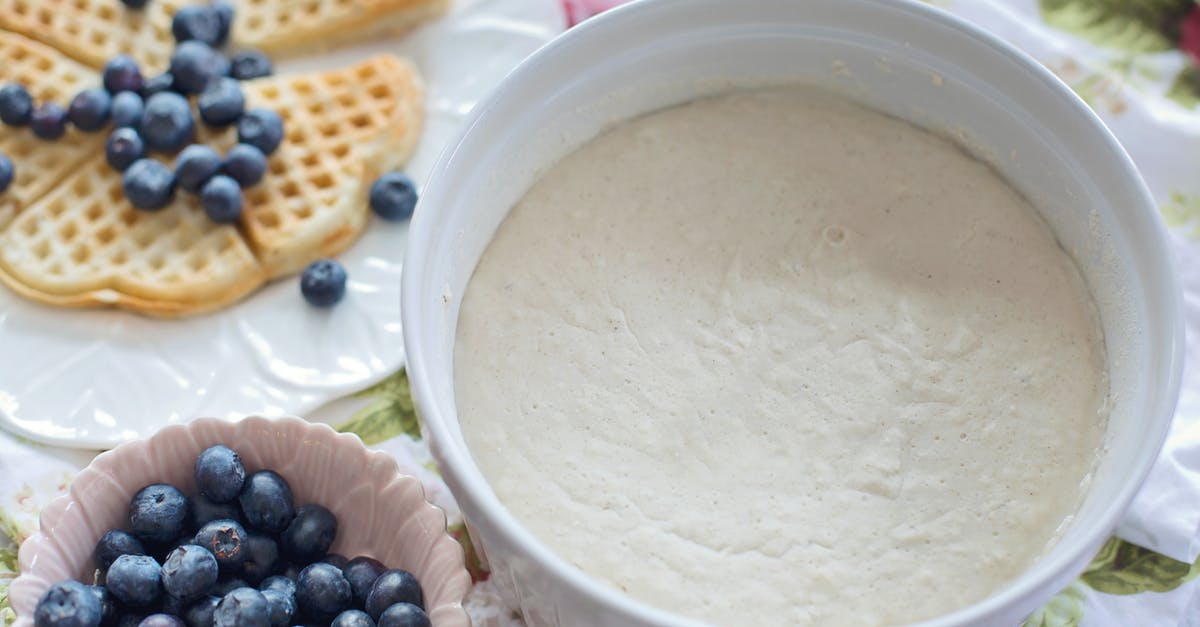How to Judge the Appropriate Feeding Schedule for Immature Sourdough Starter

I am a week into the development of sourdough starter. I initiated the starter on spring water and a flour mixture that is 1/2 whole grain rye (Hodgson Mill) and 1/2 whole grain wheat (King Arthur). I am maintaining the standard 100% hydration in a kitchen that stays around 70° F - I have been maintaining it by discarding half the starter each morning and replenishing that part with fresh rye/wheat flour and spring water.
After the initial craze of bacterial activity where the starter more than doubled overnight, it is now bubbling reasonably well and increasing in volume by about 20% in a 24 hour period. With bubbles and a great smell, I assume things are going well. I'm not in a hurry - I know these things take time.
After reading through numerous books by all the bread authorities, I still have a few questions that I wanted to parse out to the contributors on this site for advice.
(1) For an immature starter like mine, is there an advantage to feeding twice a day as opposed to once a day? My understanding is that a mature starter will rise and fall - the fall being precipitated by the exhaustion of food for the yeast. If my starter hasn't developed sufficient yeast to consume the available food within 24 hours, is there a compelling reason to re-feed it after only 12 hours? Basically, will the yeast multiply to form a mature starter more quickly by receiving fresh food more frequently (at the cost of discarding half of the starter).
(2) From my reading, I gather that the "float test" for starter is the most reliable way to judge when it is mature enough to support yeasting a loaf. When the starter gets to this point (again assuming a constant 100% hydration), will it also reliably double in size at some point between feedings? Should I wait for doubling behavior before float testing or might I eventually pass the float test without getting anywhere close to doubling?
(3) I am following the discard-and-replenish-half approach to starter development. Some sources recommend a more aggressive discard policy. Intuitively, I would think that replacing a larger percentage of starter would require a longer time for the yeast to multiply into the new medium - I assume that means the period of refreshment would be longer (and probably that it would ultimately serve to amplify the lactobacillus activity in the starter). My question here: are there any yeast-development-related arguments to support discarding and replenishing more aggressively in an immature or mature starter?
(4) Overall, my plan has been to continue feeding my starter daily while monitoring appearance and smell. I was only planning to move to a 12-hour feeding schedule if my starter rose AND fell within 12 hours (yes/no?). I'd love to hear from people like me - people who don't work in a bakery or live next to a bakery - about how long it took them to develop a reliable mature starter - I'm figuring on a month but would love it if things worked out sooner than that.
Best Answer
This question involves a lot of sub-questions that don't have simple answers, so this response is a bit long.
From my experience producing dozens of starters from scratch over the years, I have to disagree with some of the details given in the other answer. There are two goals in the early days of a starter:
- Produce an environment hospitable to the growth of yeast and lactic acid bacteria, while discouraging growth of other nasty things that could take over your starter and cause it spoil.
- Begin producing a "rhythm" of feeding that will encourage the natural cycle of yeast and bacteria growth. Generally speaking, yeast will grow quickly after a feeding (the rising phase), but their waste products and other changes will allow bacteria to take over and start growing strongly afterward (the "sour" phase). If the culture gets too sour before the yeast are well-established, and feeding schedules are infrequent, it can take weeks to establish a starter (if ever). If a culture isn't sour enough, bad things may begin to grow and spoil your starter. The trick is finding a middle way, and a feeding schedule is a major part of that.
(1) Feeding your starter more than once per day is, in my opinion, a useful tool for guaranteeing a high success rate in the first few days of a new starter. At a minimum stirring at least a couple times per day will inhibit mold and other microorganisms from getting established on the surface before the culture becomes sour (i.e., acidic). It is true that feeding too frequently may not allow appropriate levels of sourness to occur in the first few days, but this can be overcome by two methods.
One solution is to add artificial acidity. After many, many trials, various forums online have discovered pineapple juice is a near-ideal addition to bring down pH and add acidity in the first 2-3 days of starter growth. Use it instead of water. (Note that this process can be done with feedings every 24 hours or more frequently.)
The other solution is to only add partial feedings for the first couple of days (for example, following a regimen like this one). To explain this method in more detail, rather than doubling the starter with each feeding (and discarding half), you would add the same amount each time for the first few feedings without discarding anything. Thus, the first feeding would double the quantity of starter, but the second would only add 50%, the third would add 33%, the fourth 25%. Each addition will provide fresh food to encourage yeast growth, while simultaneously concentrating the acidity.
(2) The "float test" is good for mature starters, but I don't think it's good enough to assess when your starter may be ready for bread. A very strong starter will take off and rise significantly within a few hours after feeding. I would wait until this happens.
(3) First, there is no reason to be wasteful. I have no idea why many starter recipes start with a cup of flour or whatever and waste pounds of flour in the first week. I've often started with 10-20 grams of flour. And then I follow a regimen like the second link above or something like suggested in the second page of discussion on the pineapple juice solution, where you only need a few tablespoons to get going and you don't need to discard anything for at least the first few days. Working in small quantities won't delay the establishment of your starter, and if you're only using a tablespoon or two of flour for each feeding, it's not a lot to discard.
As for ratios for feeding, as I said, many prefer a solution that actually doesn't discard anything for the first few feedings to produce adequate acidity. After you start seeing a yeast response with lots of rise (not just small bubbles which may be due to bacteria activity or the large surge in bubbles which usually happens in the first 48 hours, due to bad bacteria activity before the culture becomes sour), you can begin to discard and replenish. Many people double the culture with each feeding at this point, but I've had better results doing a 1:1:1 feeding (1 part starter to 1 part flour to 1 part water by weight) at this stage, as long as the yeast are clearly showing some activity, even if they might be slower.
Once the starter is mature, you can be more aggressive with discarding and replenishing, or alternatively planning ahead and only saving small quantities of starter for the next batch, so you don't have to discard much at all. I find the 1:1:1 feeding strikes a good balance (effectively equivalent to discarding 2/3 of the starter and replenishing the rest). Saving smaller amounts of starter will tend to produce a more mild starter, while doing your method of discarding half can lead to a somewhat more sour product, which some people prefer. Doing a 1:2:2 feeding or even using smaller quantities of starter at each feeding can also have benefits, but it requires a strong, mature starter. (For some discussion of various opinions on feeding ratios, see here. In general, the right ratio is what seems to work with your starter and to produce bread you think tastes good.)
(4) You can get away with a 24-hour period between feedings for the first few days, but as I said, I'd at least stir it every 12 hours or more frequently to avoid mold settling. The pineapple juice links above recommend against feeding more frequently in the first couple days to avoid diluting the acid. I agree with that advice if you were using water and discarding and doubling the starter with each feeding, since you wouldn't be allowing proper acid development. But if you follow the juice method or the other method outlined in the links, the acidity will become concentrated with the initial feedings, rather than diluted, and more frequent feedings can allow the yeast to "catch on" quicker.
Once established (and the 12-hour rise-and-fall cycle is a good benchmark), I would definitely recommend a 12-hour feeding cycle when sourdough cultures are kept at room temperature, unless you prefer a more sour bread result (and potentially a weaker culture). It really depends on your room temperature, your feeding proportions, and a number of other things -- sourdough can work with a lot of different conditions. I tend to use my sourdough for a variety of breads, and I rarely actually use it to make very sour "sourdough" bread, so I like to keep it very mild-flavored for adaptability reasons. Feeding every 12 hours at room temperature (or even every 8 hours in warm temperatures) will do that. When I'm not baking for a while, I put the culture in the fridge and take it out to do at least one feeding before reviving.
Again, a little thought can avoid waste. There is no reason to keep cups and cups of starter lying around, discarding half every time you feed it. When I save culture in the fridge, I generally save about 1/9th of what I actually need for my average batch of bread (which may only be a couple tablespoons: I often keep my starter in a tiny jar left over from Dijon mustard or something). Then I remove it the day before, do a 1:1:1 feeding, 12 hours later do a 1:1:1 feeding (not discarding anything, so it's now 9 times the original starter quantity), and I have a very mild and active starter ready to go. If I haven't used it in a while, I'll do a 1:2:2 feeding or even higher ratio to dilute the excess acidity that tends to build up.
To answer the final question of how long it takes to develop a reliable starter: I'd say with a 12-hour feeding schedule following a regimen like the one in the second link above, I can have a somewhat reliable starter able to bake bread in about 3 days, assuming good quality rye flour. Depending on conditions, it can sometimes take another day or two, but a couple more days of regular feeding regardless will ensure it's really strong. I've done this method over a dozen times, and I've never had a failure. Before that, using a 24-hour feeding cycle, I've had multiple failures (by which I mean mold or other things happened), and it would usually take at least a week to establish a culture. I haven't actually used the pineapple juice method (only water), so perhaps it is more reliable using a 24-hour feeding cycle in the first few days.
(Note that the reason I say I've produced dozens of starters over the years is because I've found these methods so reliable and not wasteful that I often don't even bother reviving an old starter I've neglected for months -- it's almost as easy to make a new one.)
Rye flour, I've found, is really useful, even if you eventually plan to switch to wheat for normal feedings (which you can do once you get the rise and fall in a 12-hour window). With whole-wheat flour, I've often had starters take much longer to get established.
Pictures about "How to Judge the Appropriate Feeding Schedule for Immature Sourdough Starter"



How often do you feed a mature sourdough starter?
Feed the starter every 12 hours until you see it double or triple in volume within 6 to 8 hours; this means it's ready to bake with.How much should I feed my mature starter?
Feed the starter 1/2 cup (4 ounces, 113g) water and a scant 1 cup (4 ounces, 113g) all-purpose flour twice a day, discarding all but 1/2 cup (4 ounces, 113g) of the starter before each feeding. It should soon become healthy, bubbly, and active.How many times should I feed my sourdough starter before baking?
How many times should I feed it before baking with it? A. We recommend a minimum of three feedings, prior to baking with the starter, to ensure the starter is fully active.What happens if you use immature sourdough starter?
Baking with an immature starter will result in dense bread, or even bread that does not rise at all.Understanding Sourdough Starter | feeding, ratios, leaven, when to use, what to feed
More answers regarding how to Judge the Appropriate Feeding Schedule for Immature Sourdough Starter
Answer 2
(1) Feeding your starter more often than once a day is usually counterproductive. If you do not give the microorganisms plenty of time between feedings to grow and reproduce you will just end up wasting a lot of time and flour. One of the crucial steps for sourdough yeasts to be happy and reproduce with limited competition is the acidification of the starter. If you remove part of the starter and bring it closer to neutral pH by adding flour and water too often the starter will not acidify sufficiently. If you really feel the need to do something active, try stiring your starter every 8-12 hours. This will disperse clumps of yeasts and bacteria, bringing them into contact with new food sources as well as oxygen, and it will not reduce the acidity of the starter.
(2) When I started my sourdough culture 8 years ago I tried the float test, but I don't remember it being a reliable way to judge the leavening ability of the starter. I tend to follow the notion that a sufficiently active culture will double within 8-12 hours of feeding. Getting to that point should take no more than a week of daily feedings. If your starter isn't doubling in volume you might need to try again, some wild yeasts and bacteria are strong enough to take hold in a starter but just don't have the right stuff to leaven bread. Before you throw it out and start over, make sure you aren't missing the doubling. If you only check it once every 8-12 hours the starter may have doubled (or more) and fallen without you seeing it. Check your starter jar/bowl for a tell tale ring of flour goo where the starter has risen, left its impression and fallen.
(3) See answer #1. Once your starter is well-established you can cull larger than a 50% portion of it for use in recipes if needed but don't go too crazy while it's young and vulnerable.
(4) Unless you are trying to produce a large amount of starter in order to make a lot of bread, there isn't a good reason for a home baker to feed an established sourdough starter more than once a day. If you aren't planning on making bread every day you can keep it refrigerated and you really only need to feed it once a week or 24 hours before you plan to use it. You should expect your culture to be active enough to leaven bread within 7-10 days after it first starts bubbling. After that point the flavor and activity of your starter may continue to change for 30-90 days as it matures and microorganisms reach a balance point. If you transition your starter over to white flour, don't be surprised if it's activity declines for a few days.
Sources: Stack Exchange - This article follows the attribution requirements of Stack Exchange and is licensed under CC BY-SA 3.0.
Images: Jill Wellington, Barbara Olsen, Karolina Grabowska, EKATERINA BOLOVTSOVA
